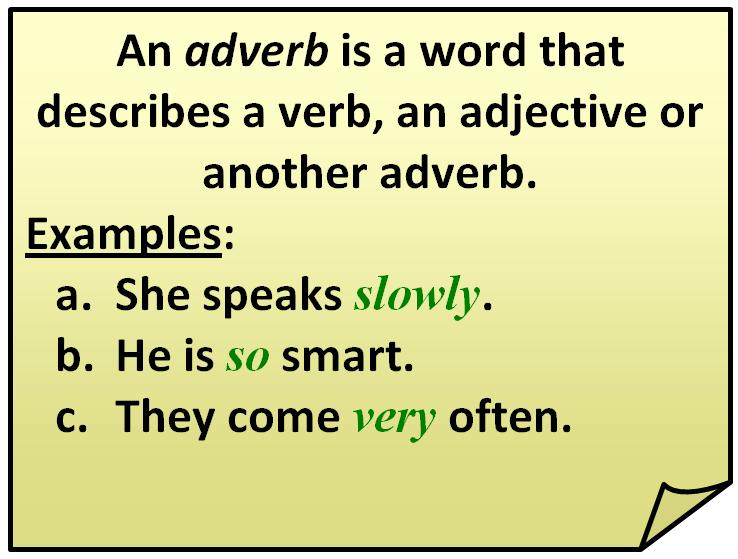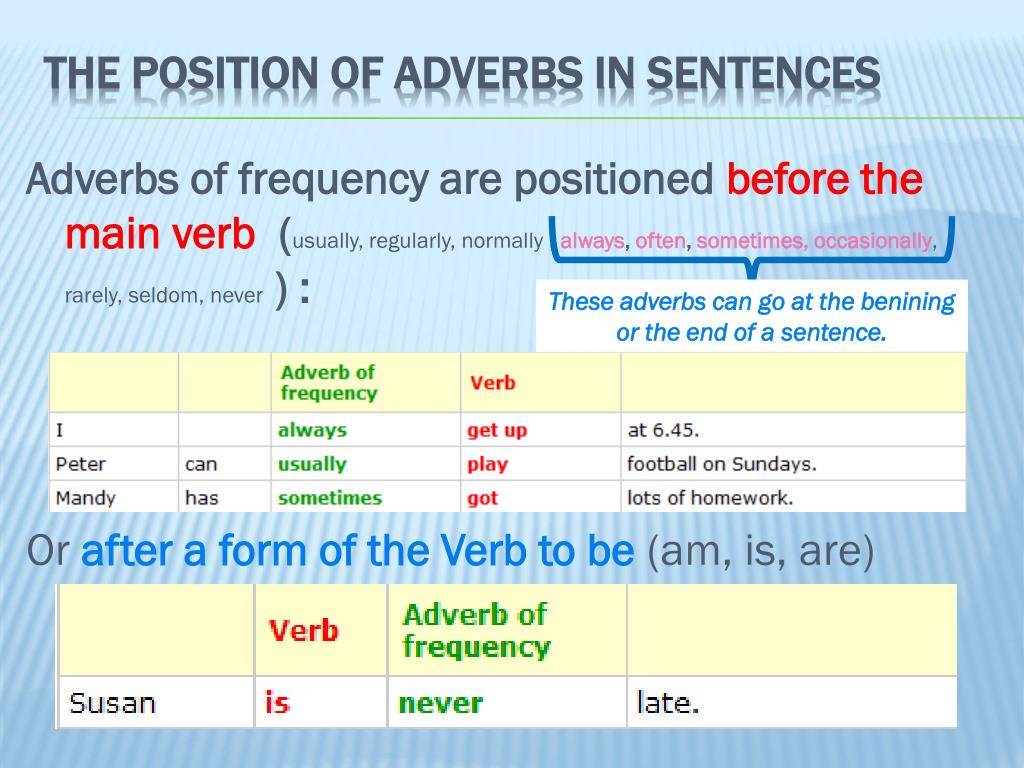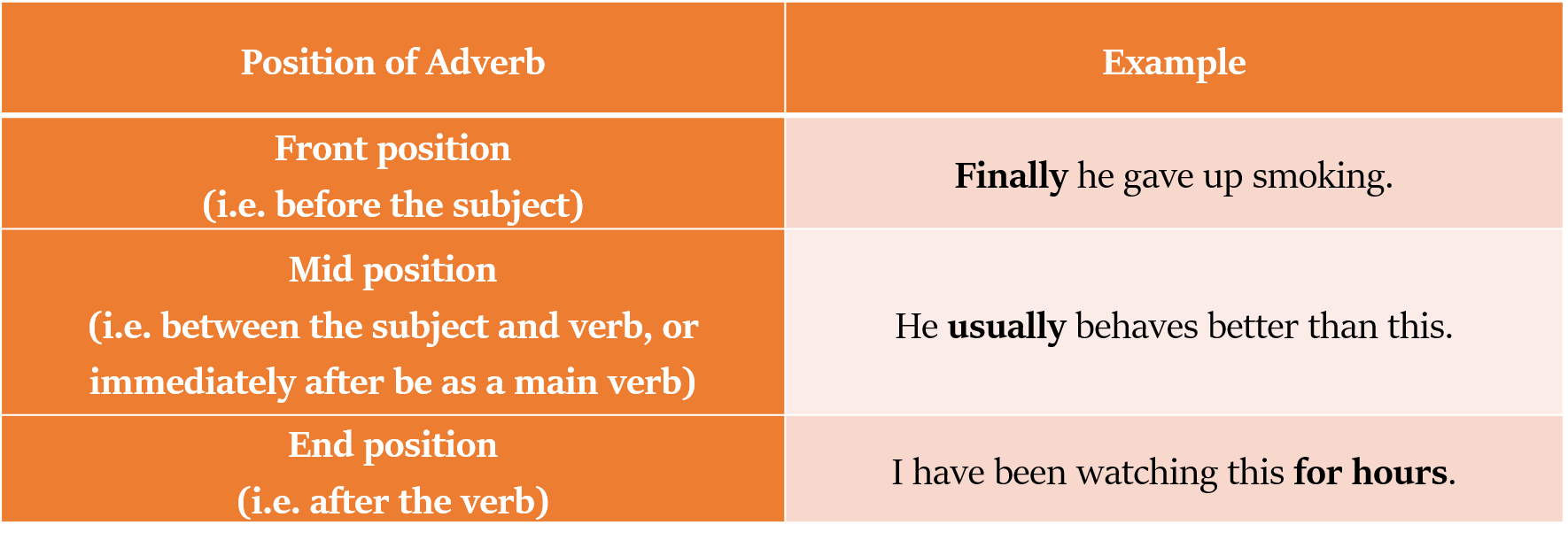Adverbs are words that describe verbs, adjectives, other adverbs, or clauses. Adverbs often answer the questions “How?” and “In what way?” For example:
- She sings beautifully.
In what way does she sing? Beautifully. - He runs very fast.
How fast does he run? Very fast. - I occasionally practice speaking English.
How frequently do I practice? Occasionally.

Adverbs used to begin sentences/clauses | Adverb Placement
Connecting adverbs
To place an adverb at the beginning of a sentence or clause is also known as ‘initial position adverb placement’, and the adverbs that are commonly used in these positions are known as ‘connecting adverbs’, such as:
- Consequently
- However
- Next
- Still
- Then
These adverbs are known as connecting adverbs, quite simply, because they are used at the beginnings of phrases and sentences to connect them to what has been said before. For example:
- I did not care for her tone. However, I let it go.
- I began to dislike my course within months of having signed up for it. Consequently, I never did well.
- That was the Medieval section of the museum; next, we have the Industrial Revolution.
Adverbs of time
Time adverbs, like ‘tomorrow’, ‘yesterday’, and ‘sometimes’, are among the most flexible of all adverbs, and can often take the initial position. For example:
- Yesterday I was very busy, which is why I was unable to meet you.
- Tomorrow I am leaving for Calcutta.
- Sometimes we feel as if we do not belong in this group.
Adverbs in the middle | Adverb Placement
Focusing adverbs
‘Focusing adverbs’ are those adverbs that emphasize a part of the clause or sentence to which they belong, and are generally used mid-sentence. Focusing adverbs include adverbs of frequency (often, rarely, never, always, etc), adverbs of certainty (perhaps, probably, certainly, maybe, etc), and adverbs of comment (adverbs that are used to express an opinion, such as smartly, responsibly, intelligently, etc).
For example:
- You are always late.
- I will probably be absent from the party.
- He acted responsibly by informing the authorities about the wallet he had found.
Note: Adverbs of frequency are used before the main verb, not the auxiliary verb.
Adverbs to end sentences | Adverb Placement
This is the most common position of adverbs in sentences.
Adverbs of manner
Adverbs of manner are used to describe how something is done and are generally placed at the ends of sentences or clauses. For example:
- He wrote the answers correctly.
- His stammer caused him to speak haltingly.
Adverbs of place
Adverbs of place are used to describe the place where an event occurs, and are also positioned at the ends of sentences or clauses. For example:
- Father is sleeping upstairs.
- In a couple of days, I will be traveling north.
Adverbs of time
Adverbs of time, as discussed earlier, can also find their way to the ends of sentences or clauses. For example:
- I leave tomorrow afternoon.


